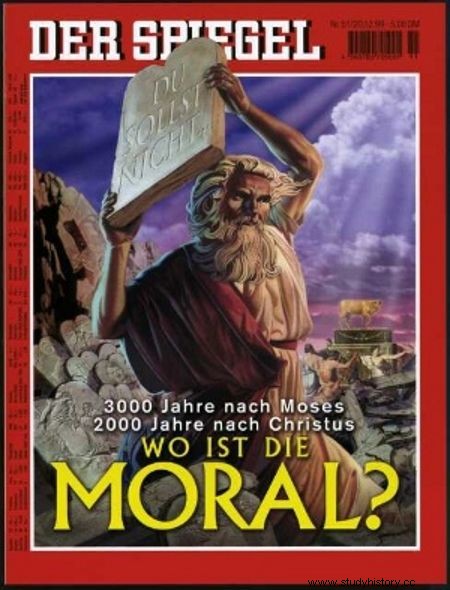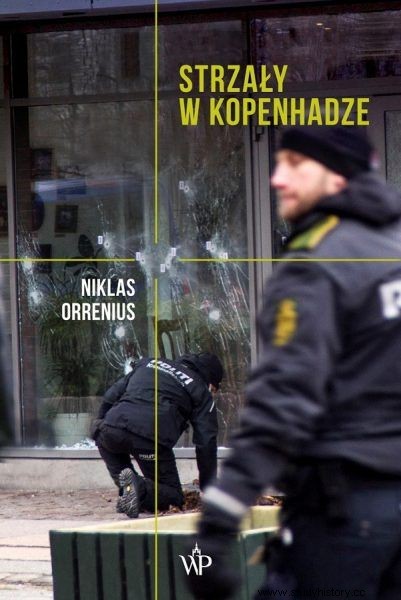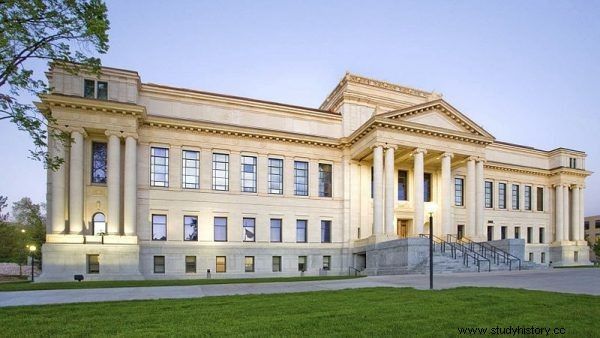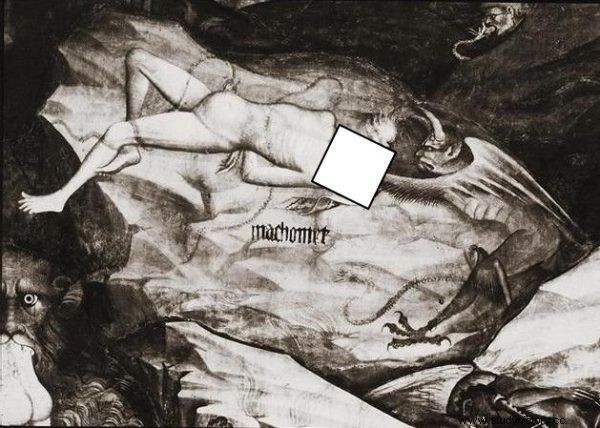Massive campaign from two decades ago. Resentful students. Death threats. Arrest for an attempted assassination. You probably haven't heard of these scandals with the images of Muhammad. Even though they got a lot of publicity.
Almost all media in Poland informed about the biggest scandals related to the publication of the likenesses of Muhammad. The premiere of the new book "Arrows in Copenhagen" - dedicated to the Swedish cartoonist Lars Vilks, who has been struggling for years with harassment, criminal threats, and even with thwarted attempts on his life - is a good excuse to talk about cases that are not so high-profile, but equally controversial. And deeply embedded in history.
19th century painting on censored
When it comes to the likeness of Muhammad, it takes very little to arouse great controversy. Two decades ago, the editors of the German daily Der Spiegel found out about it. The main article of the December 1999 issue was illustrated with a painting by Theodor Hoseman. And it was not a new graphic for a magazine, but ... a classic work of art from the mid-nineteenth century.
The text contains images of four "moral apostles":Jesus, Confucius, Immanuel Kant and Muhammad. The last of the images was taken from the painting "Die Berufung Mohammeds durch den Engel Gabriel".
This picture had already been published by "Spiegel" before, without raising any protests. This time, however, the Turkish TV station "Show TV" caught the attention of the cover, provoking a massive campaign that quickly spread throughout the continent.

The cover of the December 1999 issue of Spiegel, introducing material on morality.
"The editors were inundated with angry letters and petitions signed by Muslims from all over Europe who were offended by the illustration," Spiegel reported two months later. - “The Turkish broadcaster made public the phone number of one of the editorial staff, which had nothing to do with the published material. Since then, he has received numerous calls every day, in which he is sometimes verbally insulted and even threatened with death. "
The publisher yielded to the advice of Muslim circles and in 2001 he reprinted the painting, but with the face of the prophet whitened.
Freedom of expression but no Muhammad
Should the university provide a forum for unfettered discussion or should it rather ensure that none of the students' feelings are offended? The University of Utah, a college in the American Salt Lake City, was forced in 2000 to hurriedly answer this question.

The dispute over the limits of freedom of speech and religion in the modern world is described in the book "Arrows in Copenhagen" by Niklas Orrenius. The item was published by Wydawnictwo Poznańskie (2018) .
As the school spokesman, Fred Esplin, recalled in a material published a few years later by The Daily Utah Chronicle:“A group of students came to object to being introduced to the prophet Muhammad. It was the first time that our attention was brought to this point. ”
As in the case of a German work of art, it was about historical graphics. As early as 1940, a mural by the famous painter Lee Greene Richards was placed on the campus, showing symbolic representations of "various fields of culture". It includes images of Charles Darwin and Aristotle. And besides:also Muhammad. It was, if you believe the local press, "one of the most important works on the school grounds".
Under the pressure of Muslim activists, it was decided to interfere with Richards's work. Although it was not removed, the signature on it, identifying one of the figures depicted as Muhammad, was painted over.

Park Building on the University of Utah campus. It is in its staircase that the Richards mural is located. We were unable to locate the photos of the work of art itself (photo:University of Utah, CC ASA 3.0).
"The viewer can now interpret this image as he wishes," said spokesman Fred Esplin.
Church with Muhammad in Hell
In 2002, the international media reported that a conspiracy to destroy one of the most valuable monuments in Bologna, Italy, had been thwarted.
"An Islamist terrorist group linked to al-Qaeda is suspected of preparing to blow up the city's most important church in order to remove the offense in the form of a 15th-century fresco depicting Muhammad, tormented in hell by devils," reported the daily "The Guardian".

15th-century fresco from Bologna basilica.
This work of art is located in the Basilica of San Petronio and, according to experts, was inspired by Dante's famous "Divine Comedy".
Four Moroccans and one Italian were brought before trial. No connection with terrorist networks has been proven. They were found to be detained after being noted that they were filming a fresco and discussing "some form of attack". The men explained that they were only tourists, although there were recorded "hostile and aggressive" comments made by them.
All accused were acquitted.
Buy the book at a discount on empik.com

